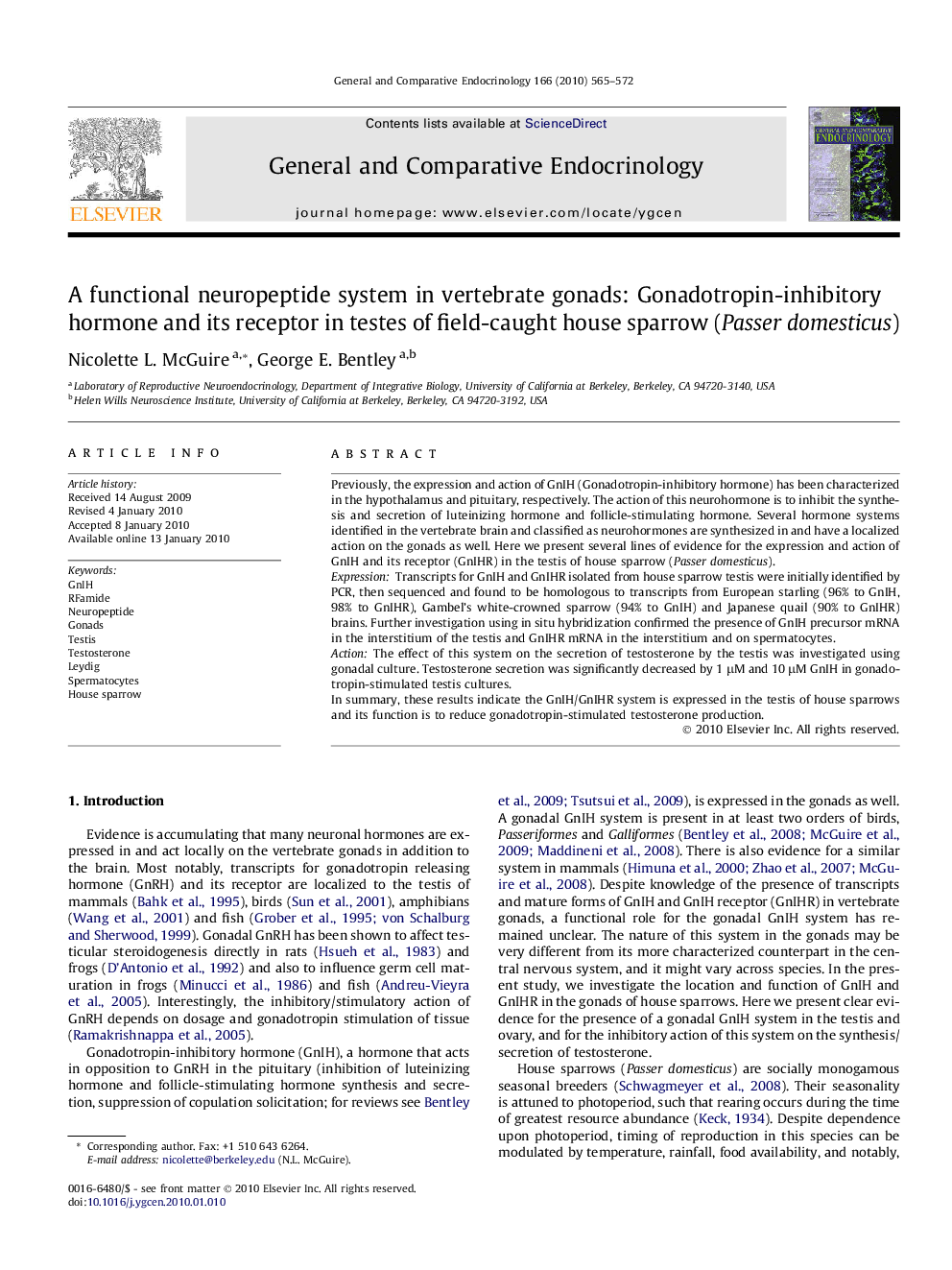| Article ID | Journal | Published Year | Pages | File Type |
|---|---|---|---|---|
| 2801099 | General and Comparative Endocrinology | 2010 | 8 Pages |
Previously, the expression and action of GnIH (Gonadotropin-inhibitory hormone) has been characterized in the hypothalamus and pituitary, respectively. The action of this neurohormone is to inhibit the synthesis and secretion of luteinizing hormone and follicle-stimulating hormone. Several hormone systems identified in the vertebrate brain and classified as neurohormones are synthesized in and have a localized action on the gonads as well. Here we present several lines of evidence for the expression and action of GnIH and its receptor (GnIHR) in the testis of house sparrow (Passer domesticus).ExpressionTranscripts for GnIH and GnIHR isolated from house sparrow testis were initially identified by PCR, then sequenced and found to be homologous to transcripts from European starling (96% to GnIH, 98% to GnIHR), Gambel’s white-crowned sparrow (94% to GnIH) and Japanese quail (90% to GnIHR) brains. Further investigation using in situ hybridization confirmed the presence of GnIH precursor mRNA in the interstitium of the testis and GnIHR mRNA in the interstitium and on spermatocytes.ActionThe effect of this system on the secretion of testosterone by the testis was investigated using gonadal culture. Testosterone secretion was significantly decreased by 1 μM and 10 μM GnIH in gonadotropin-stimulated testis cultures.In summary, these results indicate the GnIH/GnIHR system is expressed in the testis of house sparrows and its function is to reduce gonadotropin-stimulated testosterone production.
